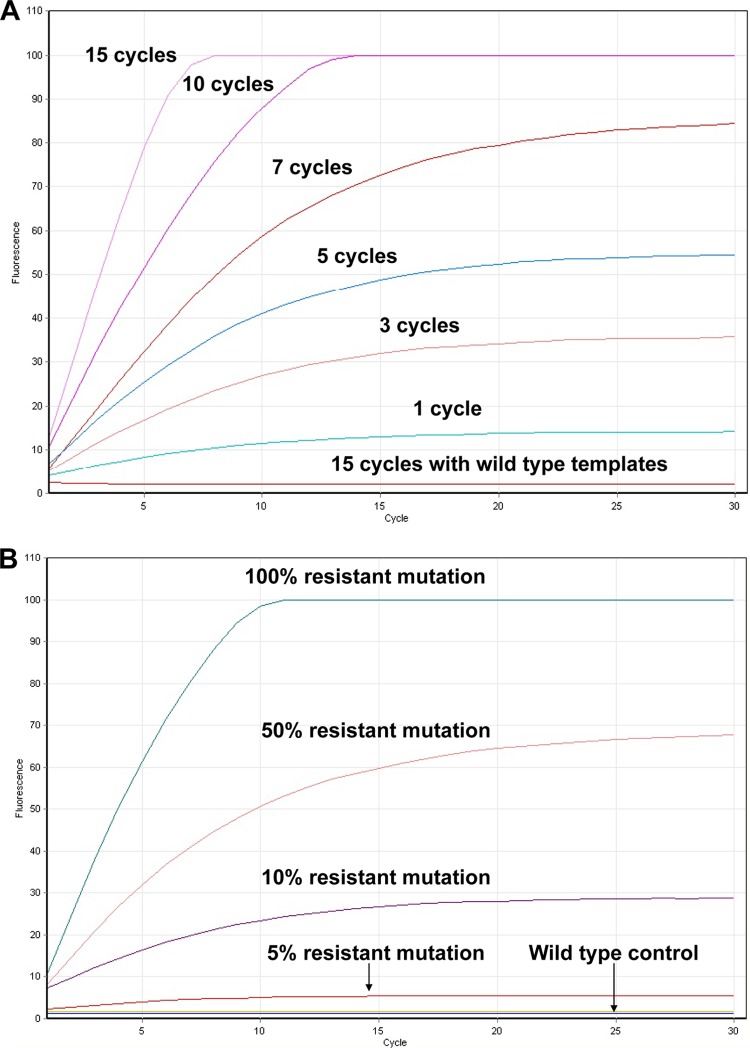FIG 1.
(A) RCA results monitored using Rotor-Gene 6000 real-time PCR machine. Using probe-rpoB-531-TTG as an example, specificity of the probe was tested by targeting 1011 copies of 531-TTG template and 531 wild-type template with 1 pmol of the resistance mutation 531-TTG-specific probe. Ligation of the probe to the standard templates was carried out using 1, 3, 5, 7, 10, and 15 cycles, followed by RCA reaction to amplify circularized padlock probe. Specific probe signals were only detected with mutation-specific padlock probe targeting mutation template. Increasing the number of ligation cycles was associated with earlier signal detection, as more circular molecules are generated. No signal was detected in the resistance-specific padlock probe targeting wild-type template. Testing of other probes gives similar results. (B) Sensitivity testing of the probe-rpoB-531-TTG targeting 1011 copies of templates containing various proportions of the 531-TTG target. Significant elevation of signal was detected in the presence of >5% (5 × 109 copies) of the resistant template, while in wild-type control, no signal was detected. (C) Standard testing with mixture of all mutation-specific probes in mutation detection. Standard templates with resistance mutations at positions 511, 514, 516, 526, and 531, as well as the wild-type template, were ligated with the probe mixture. After 15 cycles of ligation reaction, followed by RCA, positive signals were detected only in the templates containing resistance mutations while wild-type template showed no signal. A weaker signal for two probes targeting mutation at residue 526 was observed and probably is the result of multiple 526 probes competing for the binding site.


